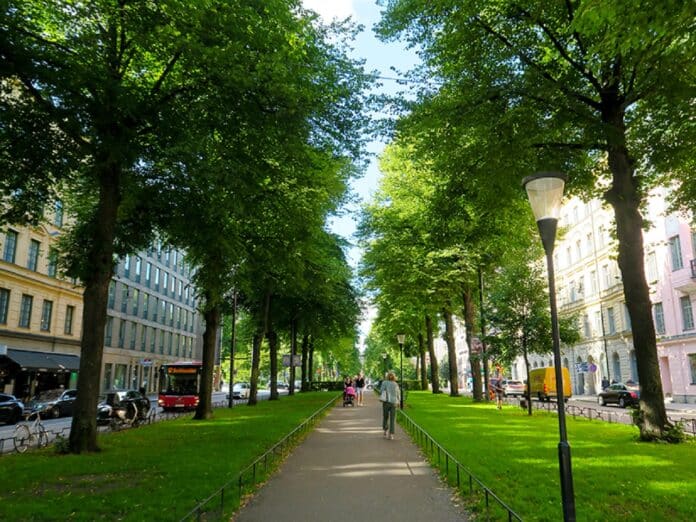The study, led by researchers from Sweden, the United States, and China, shows how cities can orchestrate a wide range of green solutions like parks, streetscaping, and roof gardens to capture carbon emissions and help reduce them.
It offers the most effective natural carbon sequestration options in 54 European cities. It also demonstrates how combining these steps with other climate actions can help cities reach net-zero carbon emissions while reducing emissions by 17.4 percent on average.
According to a new study, dozens of European cities could reach zero carbon emissions over the next ten years by incorporating nature into their infrastructure. The researchers concentrated on the indirect ways that “nature-based solutions” might contribute to carbon neutrality.
Zahra Kalantari, an associate professor of Water and Environmental Engineering at KTH Royal Institute of Technology, said, “Nature-based solutions not only offset a proportion of a city’s emissions but can contribute to a reduction in emissions and resource consumption too.”
The new study focuses on the indirect ways nature-based solutions help achieve carbon neutrality. These solutions help reduce emissions and resource consumption by offsetting a part of a city’s emissions. The results are based on previous studies on the impacts of nature-based solutions such as urban farming, permeable pavements, minor roadways with more greenery and trees, animal habitat protection, and creating more pleasurable bicycle and walking settings.
For example, urban parks, green spaces, and trees promote increased walking, biking, and other ecologically beneficial practices that substitute for motor driving. When combined with other solutions, such as green infrastructure, these techniques can improve urban microclimates by absorbing heat and cold, reducing energy demand in buildings.
The new study also indicates which measures should be prioritized and where they should be placed for maximum impact. In Berlin, for example, the report proposes highlighting green buildings and urban green areas, which may result in a 6% reduction in emissions for homes, 13% for industries, and 14% for transportation.
She said, “Many studies examine the effects of individual nature-based solutions, but this merges all of them and analyzes the potential systemic effect; that’s new.”
Journal Reference:
- Haozhi Pan, Jessica Page, et al. Contribution of prioritized urban nature-based solutions allocation to carbon neutrality. Nature Climate Change. DOI: 10.1038/s41558-023-01737-x
